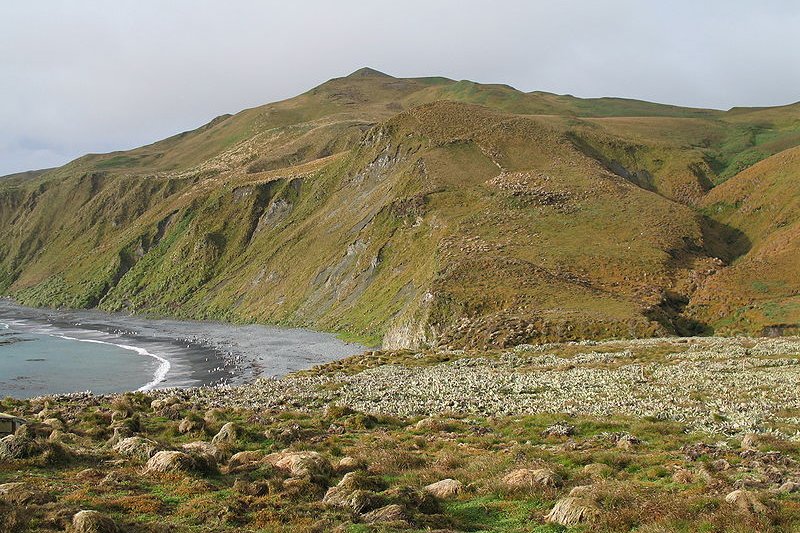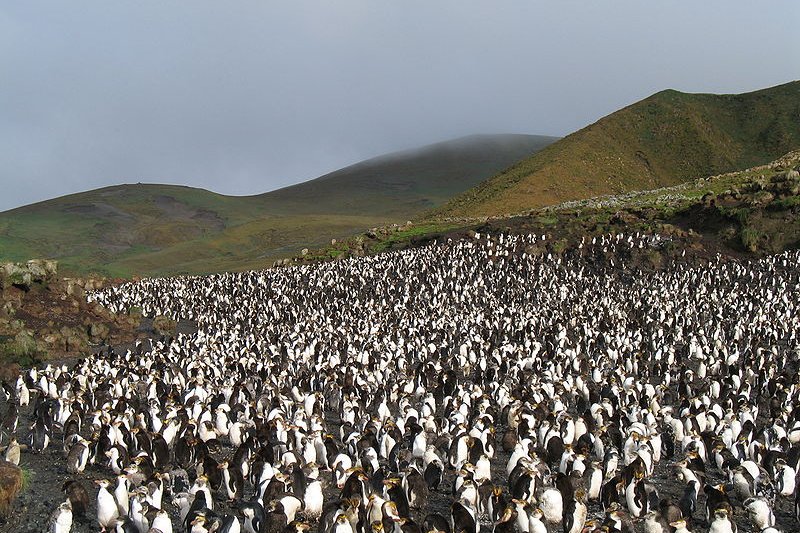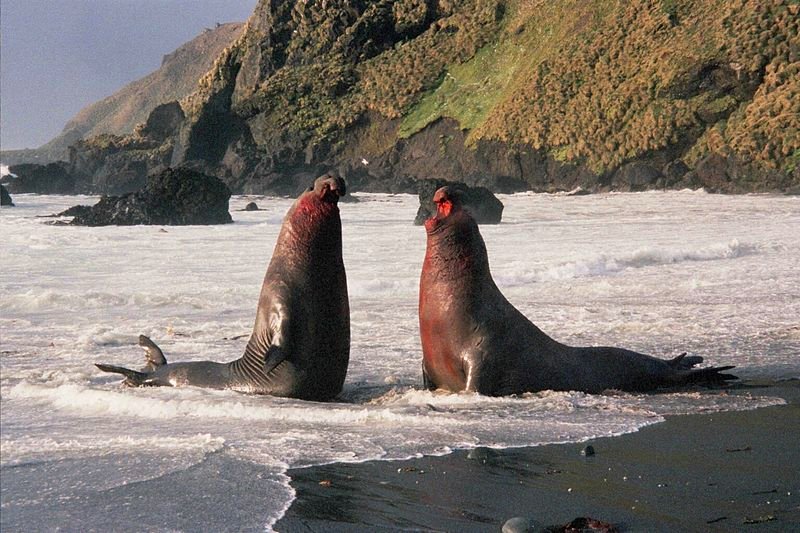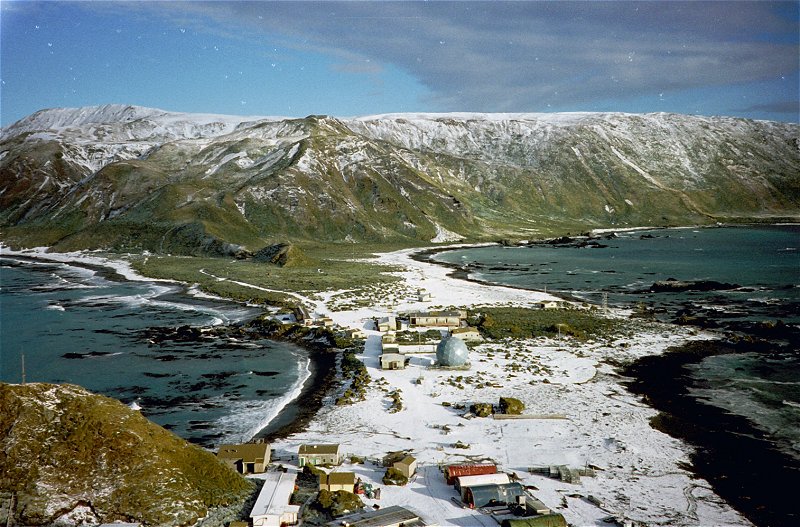 The rocky coastline of Macquarie Island
The rocky coastline of Macquarie IslandSource: https://commons.wikimedia.org/wiki/File:MacquarieIsland11.JPG
Author: M. Murphy

Macquarie Island is a small oceanic island located between Australia and Antarctica. The island is the exposed portion of the Macquarie Ridge which was pushed up by the convergence of the Indo-Australian tectonic plate against the Pacific plate. Due to its geoconservation significance, Macquarie Island was inscribed as a World Heritage Site when the World Heritage Committee met on its 21st session in Naples, Italy, on 1-6 December, 1997.
What to See in Macquarie Island, Tasmania
Macquarie Island holds the distinction of being the only place on earth where rocks from the earth's mantle, usually 6km below the ocean floor, is visible above sea level. As such, it provides a unique opportunity to view pillow basalts and other forms of extrusive rocks. Multitudes of royal penguins crowd around on Macquarie Island
Multitudes of royal penguins crowd around on Macquarie IslandSource: https://commons.wikimedia.org/wiki/File:RoyalPenguins4.JPG
Author: M. Murphy

Macquarie Island World Heritage Site Inscription Details
Location: S 54 35 41 E 158 53 44Inscription Year: 1997
Type of Site: Natural
Inscription Criteria: VII, VIII
Location of Macquarie Island
Despite it being governed by Tasmania, it is in fact 1,500 km to the southeast of Tasmania.History of Macquarie Island
Macquarie Island was discovered by accident in July 1810, when Frederick Hasselborough was looking for new sealing ground. He found the island, and made it part of New South Wales, naming it after the Governor of New South Wales at that time, Major-General Lachlan Macquarie (after whom many places in New South Wales, particularly Sydney, was named).Between 1810 and 1919, seals and then penguins on Macquarie Island were hunted almost to the point of extinction. The island became the base for the Australasian Antarctic Expedition, under Sir Douglas Mawson.
The island had been hit twice by massive earthquakes in recent history. The quake of 23 December 2004 measured 8.1 on the Richter scale, making it one of the largest ever recorded. Another, on 12 April 2007, measured 7.1 and centred on the Macquarie Fault near the island. The quake caused little damage to the uninhabited island.
 Elephant seal bulls fighting each other on Macquarie Island
Elephant seal bulls fighting each other on Macquarie IslandSource: https://commons.wikimedia.org/wiki/File:MacquarieIslandElephantSeal.JPG
Author: Hullwarren

Geography of Macquarie Island
Macquarie Island is 34 km long, from north to south, and 5 km wide. The tallest mountains on Macquarie Island are Mount Hamilton and Mount Fletcher, both at 410 meters. Off Macquarie Island are two groups of islets, Judge and Clerk Islets and Bishop and Clerk Islets. The Bishop and Clerk group mark the southernmost point of Australia.Wildlife on Macquarie Island
The wildlife on Macquarie Island are mostly seals and penguins. There are over 80,000 seals on the island, including Subantarctic Ful Seals, Antarctic Fur Seals, New Zealand Fur Seals and Southern Elephant Seals. The penguins on the island include the endemic Royal Penguins and Macquarie Shags, as well as the more cosmopolitan King Penguins, Southern Rockhopper Penguins and Gentoo Penguins. The research station on Macquarie Island
The research station on Macquarie IslandSource: https://commons.wikimedia.org/wiki/File:MacquarieIslandIsthmus.JPG
Author: Hullwarren

The island is also home to large colonies of invasive wildlife. Rats and mice were inadvertently introduced with the arrival of ships. To bring down the rodent population, cats were introduced. Unfortunately, the cat quickly multiplied, causing devastating damage to the native seabird population.
In 1870, rabbits were brought to Macquarie Island to breed for food. The number quickly increased. By the 1970's, there were 130,000 rabits on the island. Their feeding on the island grass hastened soil erosion and increased the frequency of landslips and cliff collapses, both of which destroying vital seabird breeding grounds. In the 1980s, Myxomatosis, a disease that affects rabbits, was deliberately introduced, and this brought the rabbit population down to 10,000. Subsequent generic resistance to the disease has allowed the rabbit population to bounce back to around 100,000. The growth in the rabbit population is also somewhat helped by the eradication of feral cats on the island.
List of World Heritage Sites in Australia and World Heritage Sites in the World
Back to Discover Australia
 Latest updates on Penang Travel Tips
Latest updates on Penang Travel Tips

Copyright © 2003-2025 Timothy Tye. All Rights Reserved.

 Go Back
Go Back